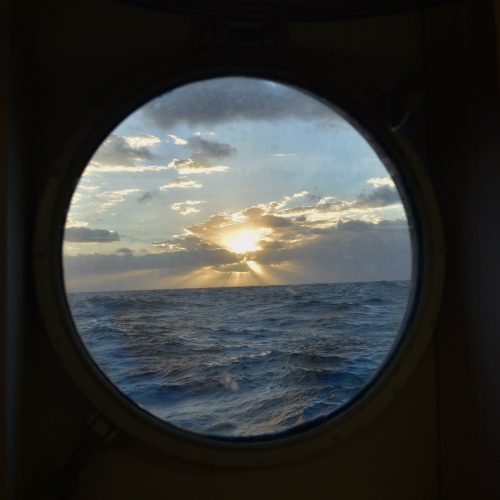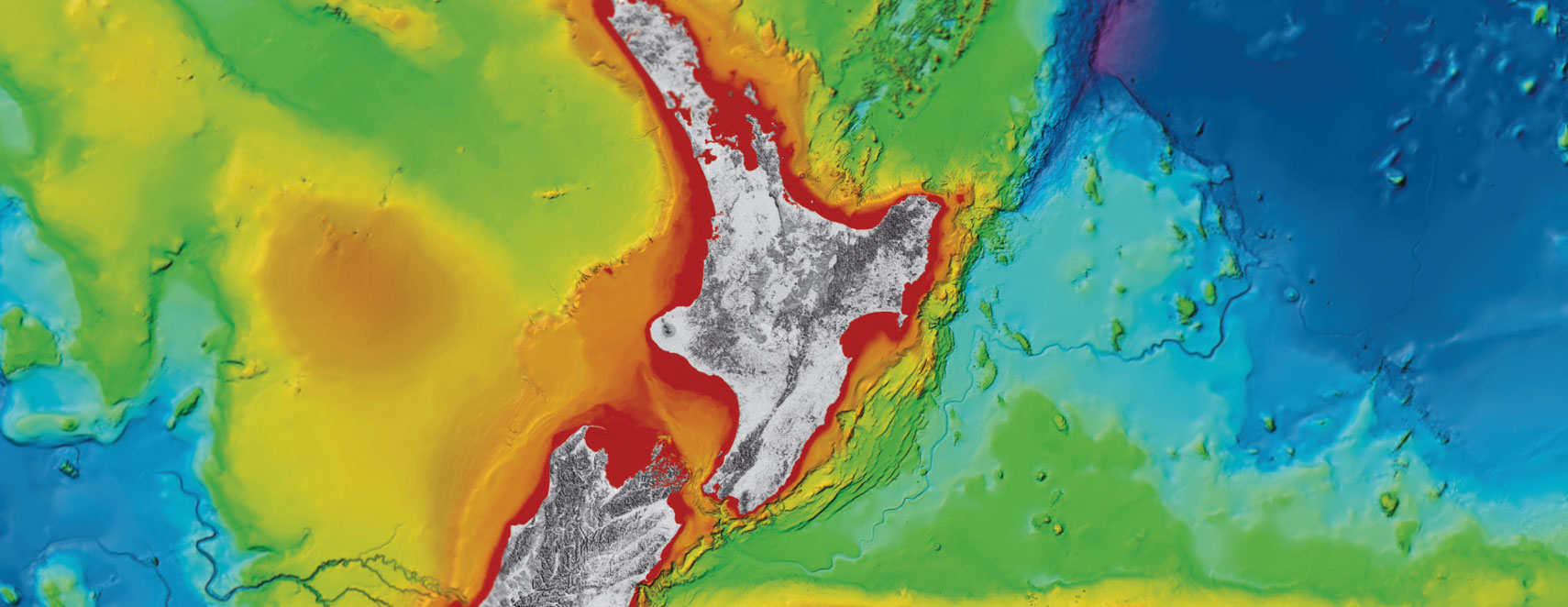
Revelle Blog #2 Why come all this way?

Dr. Claire McKinley is a Research Associate from the University of Washington. She is currently working and reporting on the research occurring along the Hikurangi subduction zone on board the US research vessel Revelle.
We are on the New Zealand subduction zone to study the causes of earthquakes in the region. A subduction zone is where one tectonic plate subducts, or is forced below, another. They are also where the biggest earthquakes and tsunamis occur. At the Hikurangi subduction zone the Pacific Plate dives under the Australian.
There are several unique things about the Hikurangi subduction zone that make it a great place to examine earthquake processes. Along the Hikurangi suduction zone, the southern portion of the subduction zone is locked, meaning that the two plates are not slipping past each other. You can think of this as the portion where energy is being stored and earthquakes as the release of that energy. On the northern portion of the Hikurangi subduction zone the plates are freely slipping or moving past each other.
We are not really sure why subuction zones lock or slip like this. A common explanation amongst scientists is that the fluid in the sediment between the two tectonic plates allows the plates to slip. Investigating both the north and south portions of the plate will help us to understand what controls when a plate locks or slips. Being able to compare locking and slipping in the same subduction zone will provide extremely useful for understanding subduction zones everywhere.
Over the next five weeks on board the RV Revelle we will be deploying instruments that will collect fluids from the sediment in both the northern and southern portions and also carrying out some coring. Because there are so many other earthquake sensors on land, we hope to be able to compare the fluid data we record with that of earthquake data other scientist are recording. We specifically are interested in the relationship between the fluid within the sediment, its production and flow and whether or not the slipping between the plates is controlled by the fluid flow or sediment.
It might seem silly for an international team that is mostly based at the University of Washington and Oregon State University to study a subduction zone so far away from home. This work is especially important to many of us, including myself, because we live near another locked subduction zone, the Cascadia subduction zone and we face the same risks from subduction zone earthquakes at home (for me, Seattle, Washington) as communities on the East Coast of New Zealand.
Disclaimers and Copyright
While every endeavour has been taken by the East Coast Lab Hikurangi Subduction Zone M9 to ensure that the information on this website is
accurate and up to date, East Coast Lab Hikurangi Subduction Zone M9 shall not be liable for any loss suffered through the use, directly or indirectly, of information on this website. Information contained has been assembled in good faith.
Some of the information available in this site is from the New Zealand Public domain and supplied by relevant
government agencies. East Coast Lab Hikurangi Subduction Zone M9 cannot accept any liability for its accuracy or content.
Portions of the information and material on this site, including data, pages, documents, online
graphics and images are protected by copyright, unless specifically notified to the contrary. Externally sourced
information or material is copyright to the respective provider.
© East Coast Lab Hikurangi Subduction Zone M9 - www.eastcoastlab.org.nz / +64 6 835 9200 / info@eastcoastlab.org.nz
